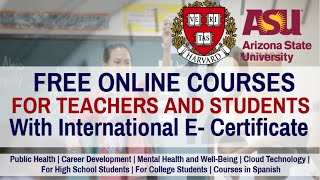
Geometric shape games are an excellent way to help kids visualize the world around them on a different axis. These games not only improve kids' visual abilities but also allow them to develop important pre-maths and literacy skills. In addition, these games can help kids practice identifying and naming shapes in different sizes and orientations.
Geometric shape-making games are a great way for students to visualize the world in a new way.
Geometric shape games can be a fun and engaging way for students to understand the properties of geometric forms. They allow students use concrete objects and manipulate them in order to express themselves. Students can also practice their math skills with these games by using measuring tools. There are several ways to use these games in the classroom.
Two players will rotate a single wheel. Then each player must identify the shape associated to a specific attribute. An arrow may point to a trapezoid. The player must correctly match the shape with the attribute. The game allows students to connect their shapes with their properties and encourages healthy competition between students.

They can help children improve their logic skills
Games with shapes can be a fun way to teach kids to think logically. Young children can have fun fitting shapes into holes, and older children can play games that require them to sort objects by their shape or row. A number series can be used to teach children how to play with numbers and how they can compare items that share the same characteristics.
Games with shapes can also help kids develop their visual discrimination. This skill helps children see patterns in images, which will help them identify objects in a picture. By placing the objects at a child's eye level, they will learn to identify them more easily. These games also help children develop their vocabulary of logical thinking, which will help them deal with complex tasks in the future.
They are able to help them learn pre-math
Children can learn pre-mathematical skills through games with shapes, such as basic shape recognition and assignment of shapes to global objects. They are also helpful for cognitive development. They aid children in understanding objects, space, routes and can even identify print and braille. There are many games for children that can help them learn pre-math concepts and the relationship between shapes and colors.
Shapes are useful for teaching children simple math concepts, including counting, measuring, and comparing objects. Children can also learn classification skills, such matching objects to one another. These games are ideal for toddlers and preschoolers.

They encourage them to become proficient in reading and writing.
For parents, games with shapes can be a fun and effective way to teach their children literacy skills. These games can be used to teach children the basic shapes of triangles, circles, rectangles and other common shapes. These games are also helpful for helping children learn about the alphabet letters, such as the letters A, B, C, and D.
Literacy skills can be learned very early. Children begin learning about shapes, such as triangles, squares, and circles, before they can start writing letters. This helps children develop literacy skills before they are ready to use them to compose words.
FAQ
What are the main types of early education?
There are many ways to explain early childhood education. Here are some of the most commonly used ones:
-
Preschool - Children ages 2 to 5
-
PreKindergarten- Children from 4-6 years of age
-
Head Start/Headstart - Children from 0-3 Years
-
Day Care/ Daycares for children 0-5
-
Child Care Centers for Children from 0-18
-
Family Child Care - Children ages 0 to 12
-
Homeschooling for children ages KG-16
What does it entail to be a teacher in early education?
An early childhood teacher must have specific training. Most states require teaching candidates to get certification from state boards in order to be allowed to teach in public schools.
Some states require teachers pass reading and math tests.
Some states require teachers who teach early childhood education to have completed a certain amount of coursework.
Many states have minimum requirements for teachers. These requirements can differ from one state to another.
What are some ways you can get scholarships?
Scholarships can be granted to help cover college expenses. There are many types of scholarships available. These are:
-
Federal Grants
-
State Grants
-
Student Loans
-
Work Study Programs
-
Financial Aid
Federal grants are direct from the U.S. government. Federal grants generally require that applicants meet certain criteria. To demonstrate financial need, applicants must meet certain requirements.
State grants are offered by individual states. State grants can be offered by each state based upon financial need, while others are given for specific purposes.
Banks and lending institutions offer student loans. Students often borrow money to pay for tuition and living expenses.
Employers are encouraged to employ qualified students through work-study programs. Employers are required by law to pay minimum wage.
Financial aid covers the majority or all of the tuition costs for low-income families.
What factors should you consider when choosing your major?
It is important to first decide if you would prefer to go straight into a job or go to college. Then you should make a list of your interests and talents. Reading, listening to music and talking to people are all possible interests. Your talents could include singing, writing, painting, sewing, crafting, cooking, baking, cooking, woodworking and gardening. When you identify your talents and interests, you can use these to guide you in choosing a major.
Fine arts or art history might interest you if your dream is to be an artist. Biology might be a good choice if you are passionate about animals. Pre-medicine and medical technology might be a good option if you want to become a doctor. Computer science, computer networking, or computer engineering might interest you if you want a career that involves computers. There are many possibilities. Be clear about your goals.
What is homeschooling?
The homeschooling method is where the parents educate their children at home. It is also known by the names private education or self-education.
Family members who want to teach their children at home can opt for homeschooling. This allows them access to a quality education while staying at home.
The parents educate their children from birth to high school. They decide what subjects and how long they should study. Each student learns all on their own.
Parents choose when to start teaching their children. Many schools recommend that children attend classes from age four until twelve years old. Some families decide to wait until kindergarten to start teaching their children.
Any number of resources can be used by parents to guide them through the curriculum. The lessons can be learned from videos, books and magazines as well as websites.
Many families find homeschooling a great fit for their busy schedules. Children can be spent more time at home than in traditional public schools.
How do I select my major?
Students choose their majors according to their interests. Because they find it easier to study something they love, some students choose to major on a subject that they really enjoy. Some students want to go into a field where there is no job. Others are motivated to make a living while studying a major. Whatever your reason, you should think about what type of job you would like to have after graduation.
There are many options for information on different areas of study. You could talk to someone in your family or friends about their experiences in these areas. Look through newspapers and magazines to find out what careers are available. Ask your guidance counselors at your high school for information about possible careers. Visit Career Services at your local library or community center. You can borrow books about various topics from the public library. You can search the Internet for information about specific careers.
Statistics
- Among STEM majors, that number is 83.5 percent. (bostonreview.net)
- Data from the Department of Education reveal that, among 2008 college graduates, 92.8 percent of humanities majors have voted at least once since finishing school. (bostonreview.net)
- They are also 25% more likely to graduate from high school and have higher math and reading scores, with fewer behavioral problems,” according to research at the University of Tennessee. (habitatbroward.org)
- In most developed countries, a high proportion of the population (up to 50%) now enters higher education at some time in their lives. (en.wikipedia.org)
- Globally, in 2008, around 89% of children aged six to twelve were enrolled in primary education, and this proportion was rising. (en.wikipedia.org)
External Links
How To
What can I do to become a teacher in my area?
Teacher jobs are available at public elementary schools, private elementary school, private middle schools. Public secondary schools, public secondary secondary schools. Private secondary schools. Charter schools. Public and private Catholic schools. Public and private daycare centers.
To become a teacher, you must first complete a bachelor's degree program at one of the following:
-
A four-year college/university
-
An associate's degree program
-
Some community college programs are two-years long
-
A combination of these three types of programs
To be eligible to become certified for teaching positions, applicants need to meet the state's requirements. These requirements include passing standardized tests, and completing a probationary phase of work experience.
Most states require that all candidates pass the Praxis 2. This test measures knowledge in reading and writing as well math skills.
Many states require applicants to get a specialized license to teach in their state.
These licenses can be issued by the state's boards of education.
Some states grant licenses with no additional testing. To determine if your state has granted licenses without additional testing, you should contact the board in your state.
Some states don’t issue licenses until the applicant has completed a master’s degree program.
Some states permit individuals to apply directly at the state board or education for licensure.
The cost of licenses varies widely depending on their duration and the required coursework.
One example is that some states only require high school diplomas, while others require bachelor's degrees.
Some states require training in specific areas, such as literacy or child development.
Some states require that applicants have a master’s degree to become licensed.
When applying for certification, many states ask prospective teachers about previous employment.
It is possible to mention other professions in your application.
However, most states will accept your prior work experience no matter what type of job you held.
It is possible to list your prior job title, position, as well as years of service.
This information is often helpful to potential employers.
It shows them you have relevant skills.
Working can give you new skills and valuable experience.
Employers can see this in your resume.